Monthly Archives: June 2012
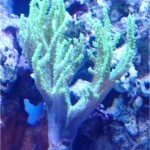
Good Corals For Beginners – Leather Corals
Leather corals are another very hardly coral making them a very good choice for people that are new to the hobby. They are readily available throughout the hobby and they can also grow to become a great looking addition to any set-up if kept in the correct conditions. These corals are very popular with both new hobbyist starting with corals for the first time, and advanced hobbyist as well making them among the most popular corals in the hobby today.
Generally speaking, leather corals are a soft skinned coral with visible polyps all over their skin. The do not have a calcified skeleton structure making them a little more tolerant of some water parameters like calcium. There are hundreds of different species of leather corals. Properly identify the exact species can sometime be very difficult as their shape can altered due to environmental factors such as temperature, salinity, light intensity and water movement to name a few. A leather can look one way in a aquarium and then (over time) look very different when placed in another tank.
Continue reading
Lightning clownfish fry
It is a big day for all clownfish lovers and especially those who hope to keep a lightning clownfish sometimes in the future. Not too long ago we reported on what ultimately turned out to be a failed spawning of the Lightning clownfish. Well a few days ago the pair spawned again and this time they didn’t eat their eggs. A few hours ago the first eggs hatched and the remaining ones where moved to a dedicated Black Round Tub for artificial hatching. There are still some challenges before we get to see lightning clownfish fry and there is no guarantee that the pair will produce Lightning clownfish fry but with a little bit of luck we will see lightning patterned fry before we know it that can be passed on to other breeders that can help this wonderful type of PNG clownfish spread in the hobby.
Go to lightning-maroon-clownfish.com/ for the latest news about the fry and the breeding efforts. You can see the hatching announcement here.
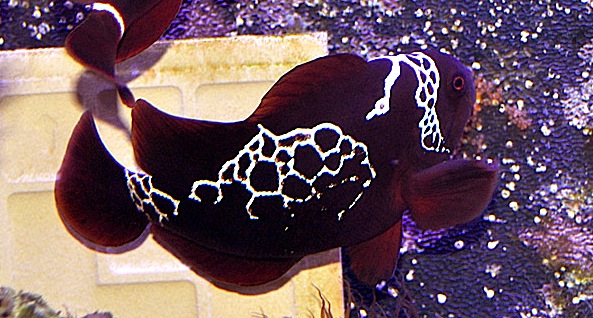
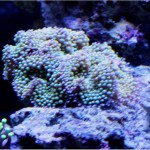
Good Corals for Beginners: Mushroom Corals
Mushroom corals like an aquarium superman rhodactis mushroom are a great choice for a beginner coral. They are a soft coral and among the hardiest of corals commonly found in the hobby today which can tolerate less than idea water conditions for short periods of time. Mushrooms can also be found in a wide verity of colors and sizes making then a very great choice to add some color to any reef aquarium. They are also readily available in most local fish stores and on-line reef stores.
There will be a few more articles posted on other easier/simpler corals to care for, so stay tune, more to come.
The below will outline the requirements to keep mushroom corals healthy and thriving in your tank.
Continue reading

The Importance of Water Flow and Movement
In my experience, this is one of the more important factors in setting up a marine aquarium. Having good flow and water movement is key to having a great and healthy marine aquarium. Not having enough flow can lead to a variety of potential problems. I will explain why I have this opinion along with showing a few examples.

Continue reading
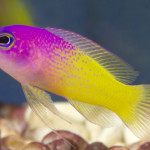
Bicolor basslet, Lipogramma klayi, bred by Todd Gardner
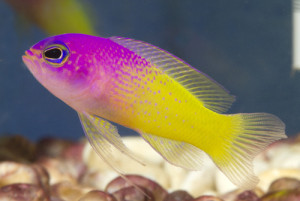 Todd Gardner at the Long Island Aquarium has added another first to the long list of species that was first bred at the aquarium. Todd successfully breeds and raised the larvae of the expensive deep water bicolor basslet, Lipogramma klayi. The stunning fish has been dropping in price over the last few years and can now be bought for under USD1000.This is in large part due to the Curacao Aquarium Submarine being able to catch them in larger numbers than before. It is however far from a cheap fish and there is no doubt that aquaculture of this fish is a worthwhile goal as more aquarists deserves to get to know this little beauty. Continue reading
Todd Gardner at the Long Island Aquarium has added another first to the long list of species that was first bred at the aquarium. Todd successfully breeds and raised the larvae of the expensive deep water bicolor basslet, Lipogramma klayi. The stunning fish has been dropping in price over the last few years and can now be bought for under USD1000.This is in large part due to the Curacao Aquarium Submarine being able to catch them in larger numbers than before. It is however far from a cheap fish and there is no doubt that aquaculture of this fish is a worthwhile goal as more aquarists deserves to get to know this little beauty. Continue reading
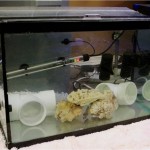
Quarantining New Additions
One of the toughest lessons that I had to learn the hard way is the importance of quarantining new fish before adding them to your set-up. When I was starting out in this hobby I did not use a quarantine tank and I was lucky for a quite a few years. But then my luck ran out and I had a whole tank wiped out by adding one little fish that was carrying a disease but did not show any symptoms. That was when I started learning how to quarantine fish and actuating following a quarantine process. Based on what I have read, having a tank’s complete stocking wiped out by a disease introduced from a new fish has driven more people out of the hobby than anything else. The good news is this is completely avoidable when you follow a quarantine process.
The below thread in our forum also highlights the importance if you still think it could not happen to you.
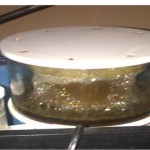
Carbon Dosing in Layman’s Terms
Carbon dosing certainly is not a new concept, but it has become more popular in recent years as hobbyist have been learning more about it and seeing some good results. It can be argued that this topic must be researched just as you would any other aspect of the hobby, but I would suggest this would require a little more detailed research as carbon dosing requires a good understand of: maintaining good water chemistry (water parameters), the factors that affect water chemistry, and how to quickly recognize changes in the appearance of your corals and/or the behavior of your fish. I would even go as far as to suggest using this article to guide your further research into this topic before deciding to start carbon dosing.
In addition, if your only goal for carbon dosing is to reduce very high levels nitrates and phosphates, then I would suggest carbon dosing may not be for you. In this instance, carbon dosing is only addressing the symptoms of high levels of nitrates and phosphates and not the causes of them. You could still have a problem with your set-up that is just not noticeable now and possible has even been complicated even more. After all, your very high nitrates and phosphates were not caused by a lack of carbon dosing.
I’ll try to explain what I have learned about carbon dosing and share some of my experiences with it. I prefer to explain things in layman’s terms as much as possible as I usually just give myself a headache when I try to correctly spell all of the scientific terms or all of the different scientific names of all the different types of bacteria.